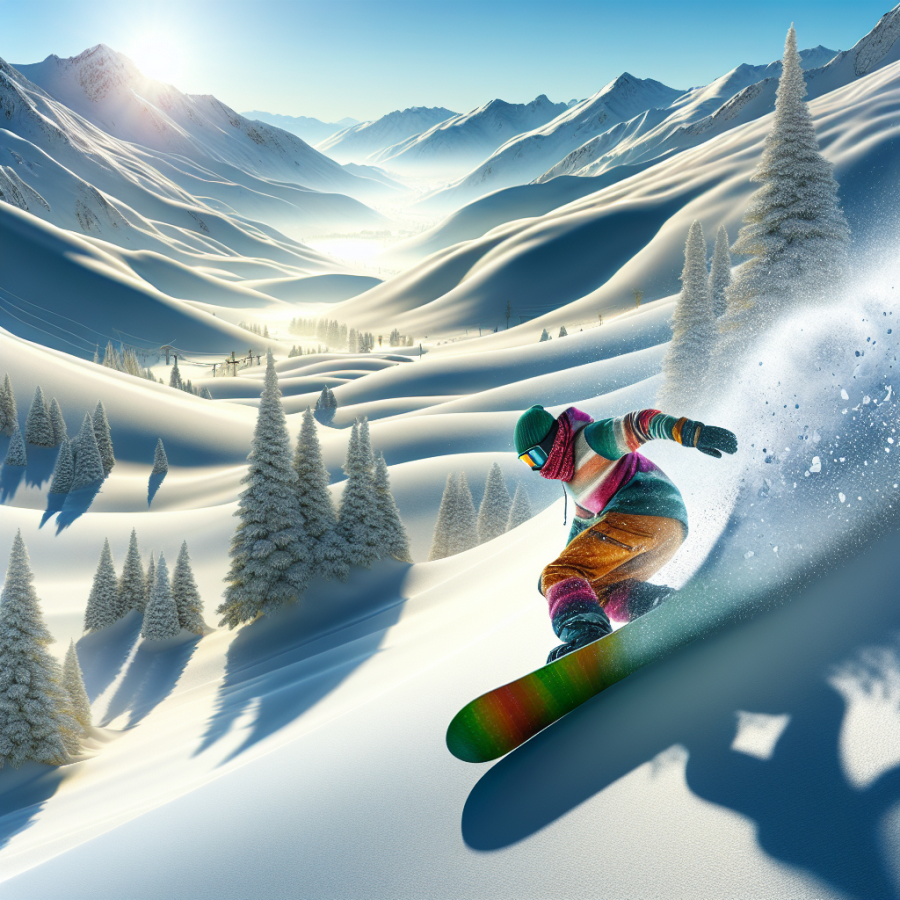Essential Snowboarding Equipment for Pros and Beginners
Snowboarding is a thrilling and exciting sport that requires more than just skill. Both professional athletes and beginners need the right equipment to ensure their safety and improve their performance on the slopes. Here's a look at some essential snowboarding equipment that both pros and beginners should have.
First and foremost, all snowboarders need a quality snowboard. Depending on your skill level, you might choose a softer board which is more forgiving for beginners, while pros often prefer a stiffer board for speed and precision. Likewise, the width, length, and shape of your board will depend on your size and your preferred style of snowboarding.
Boote are crucial as they connect the rider to the snowboard. The right snowboarding boots will not only keep your feet warm and dry, but they also provide the necessary stability for better control and balance. For beginners, it's recommended to go for boots with a softer flex to make turning easier. On the other hand, experienced riders often opt for stiffer boots that provide greater responsiveness.
Another critical piece of snowboarding equipment is bindings. These directly connect your boots to your snowboard, transferring your movement to the board. Beginners may prefer bindings that have a softer flex, while more experienced riders often choose stiffer bindings for quicker, more precise control.
A helmet is non-negotiable when it comes to snowboarding. Accidents can happen, and you want your head to be protected. Regardless of whether it's your first time on the slopes or you're an experienced pro, a helmet is a must-have piece of equipment.
Goggles are essential to keep your vision clear in different weather conditions on the slopes. The proper goggles will protect your eyes from wind, snow, and glare, helping you navigate safely down the mountain.
For those icy days on the slopes, you'll also need a sturdy pair of snowboarding gloves. No one wants frozen fingers, and gloves with good insulation will keep your hands warm. Additionally, gloves with a gauntlet that extends over your cuffs can prevent snow from getting inside.
Finally, versatile snowboarding clothing will keep you comfortable in various weather conditions. A good base layer will wick away sweat, while an insulating layer will keep you warm. A waterproof, breathable outer layer will protect you from the wind and snow.
Safety should always be your top priority in any sport, and snowboarding is no exception.
Read also:
Exploring the Thrill and Challenges of Competitive Contests
Top Techniques for Improving Your Snowboarding Skills
Snowboarding is an exhilarating and challenging winter sport. Like any other sport, it requires a blend of skill, precision, and perseverance to master. If you're looking to improve your snowboarding skills, here are a few techniques to keep in mind.
1. Understand Your Snowboarding Gear
Your snowboarding gear plays a significant role in your performance on the slopes. Get familiar with your snowboard, boots, and bindings. Understand the role of each element and how they contribute to your overall performance. Choose a snowboard that's right for your size, skill level, and style. The board's shape, length, and flexibility can significantly impact your snowboarding experience. Having the right board can make turning, carving, and handling much easier and enhance your overall performance.
2. Perfect Your Stance
Your stance on the snowboard greatly influences your balance, control, and ability to maneuver. Spend time mastering a comfortable and efficient stance. Your feet should be shoulder-width apart, with your knees slightly bent. Lean forward a bit and keep your weight centered over your snowboard. Remember to always look in the direction you're going, as your body naturally tends to follow your line of sight.
3. Work on Your Balance
Balance is the essence of snowboarding. Work on maintaining your balance even when you’re on challenging terrains or making sharp turns. Training your core can improve your balance significantly. Exercises like yoga and pilates can be highly beneficial in improving core strength and balance.
4. Practice Your Turns
Turning effectively is crucial to navigating through the slopes. Learn and practice different types of turns — like carved turns, skidded turns, and "S" turns — to have a variety of maneuvers at your disposal. Remember, your knees are the key to smooth and controlled turns. Bent knees can absorb shocks and help you maintain stability even on uneven terrain.
5. Learn to Fall Correctly
Snowboarding is a sport where falls are unavoidable, especially when you're trying out new tricks or techniques. However, learning to fall correctly can save you from injuries. Try to spread out the impact by landing on your forearms and rolling onto your back. Avoid falling on an outstretched hand as it may lead to wrist injuries.
6. Get to Know the Mountain
Understanding the terrain is a key factor in improving your snowboarding skills. Each mountain has its own unique features and challenges, and getting familiar with them can help you plan your course better.





